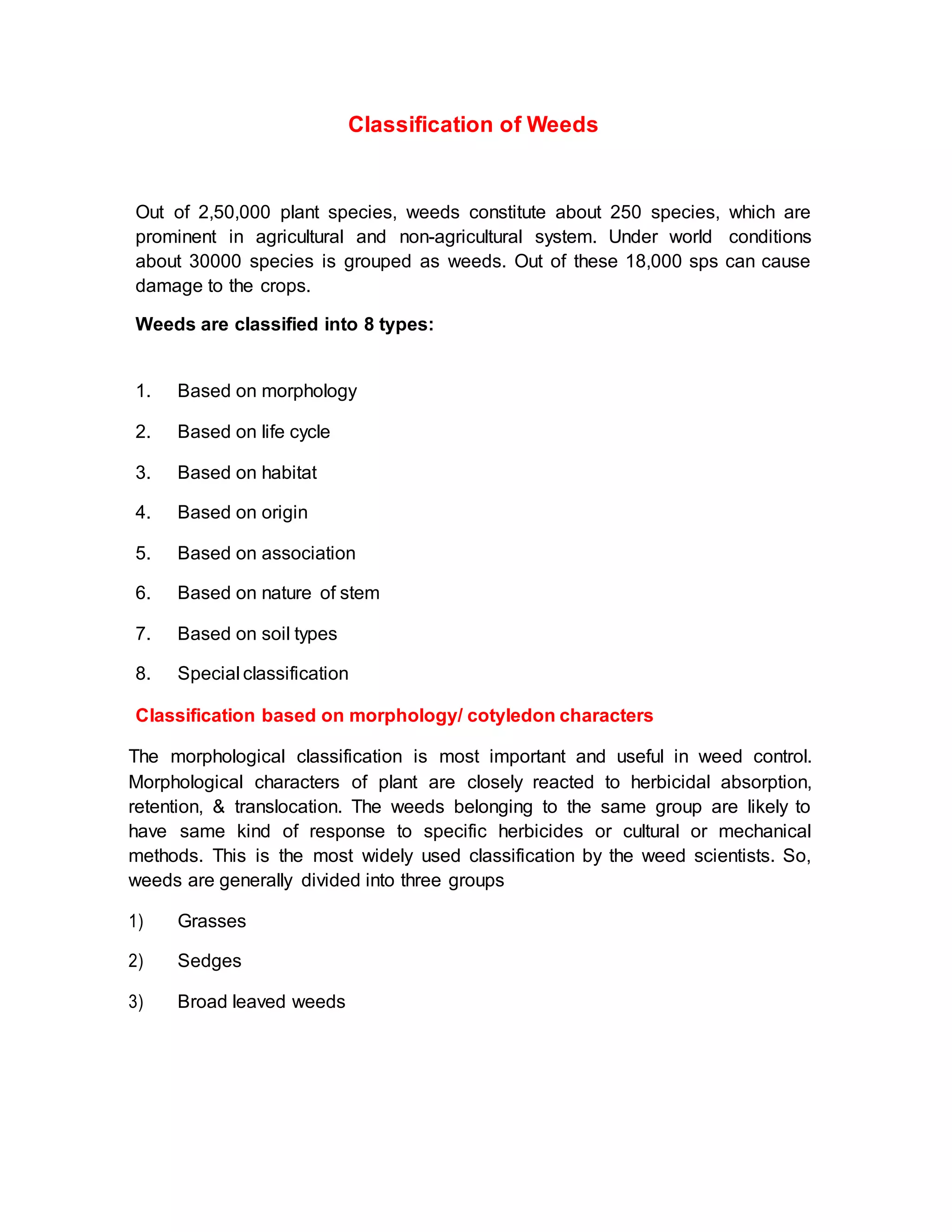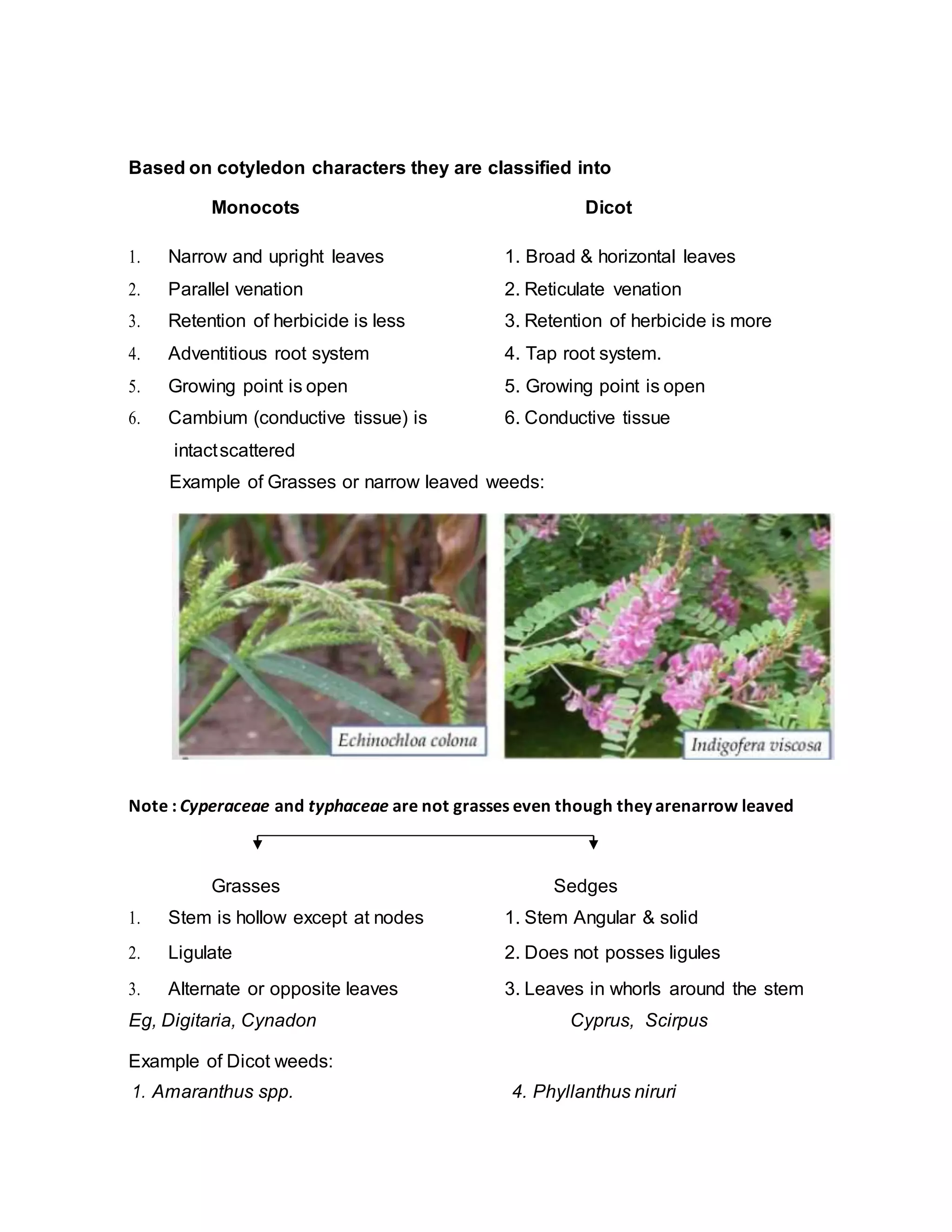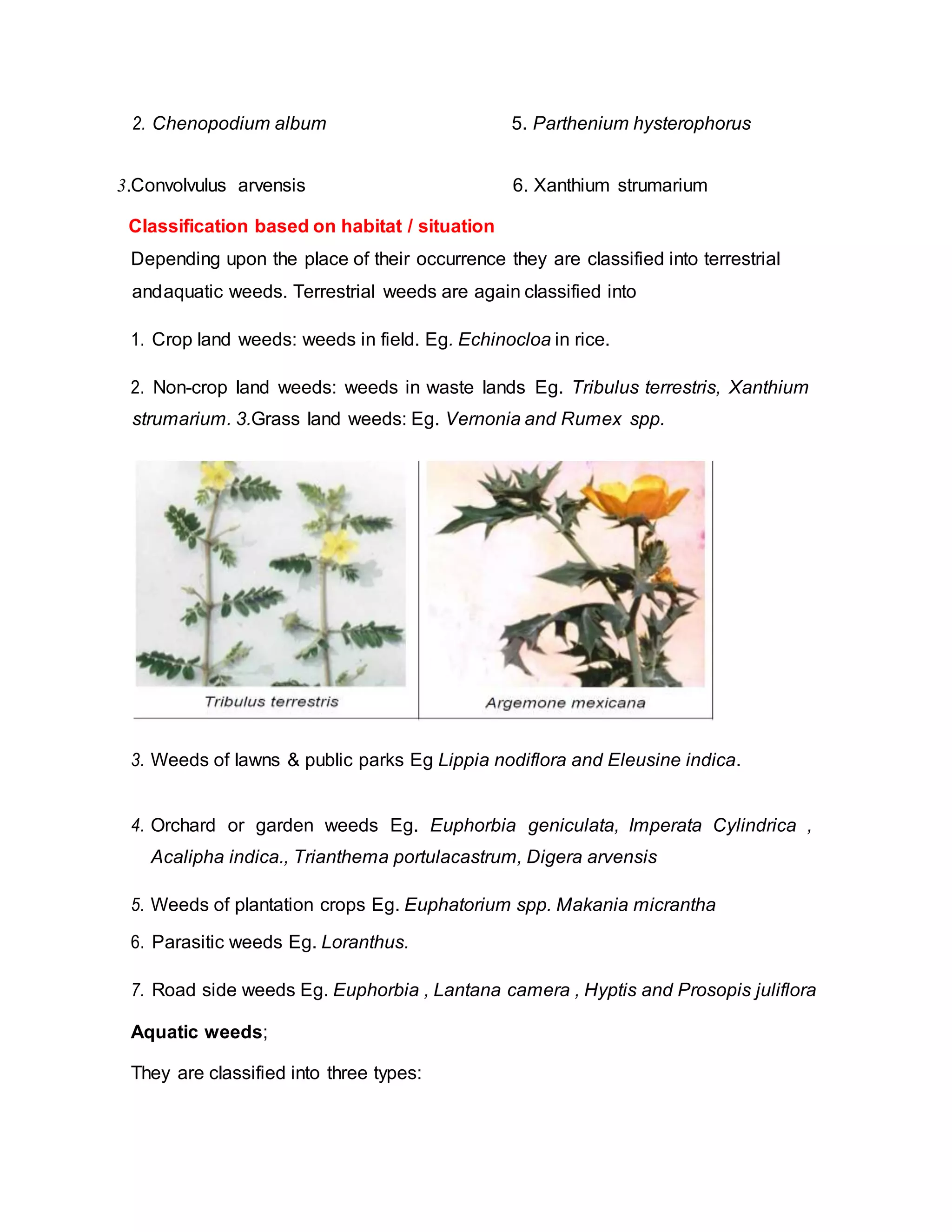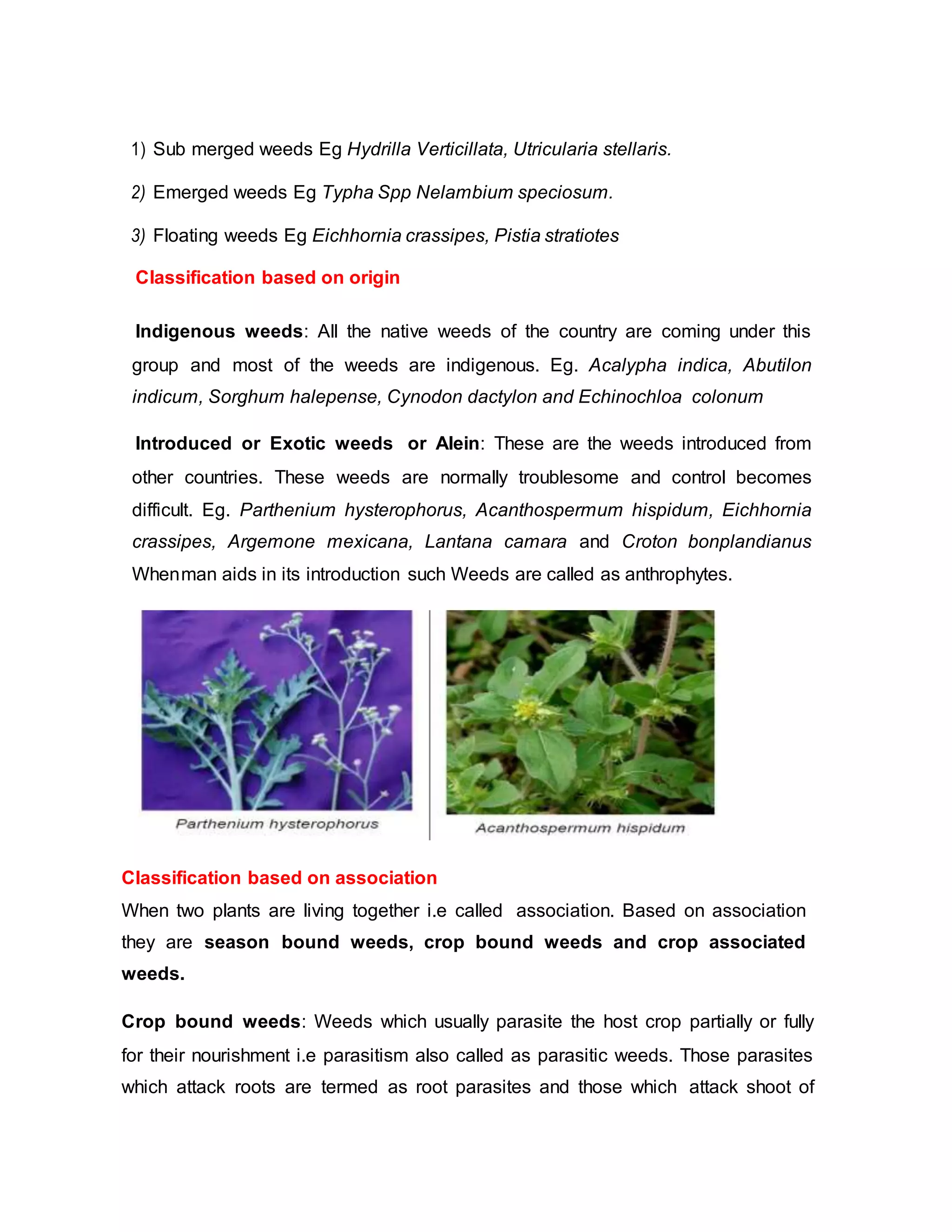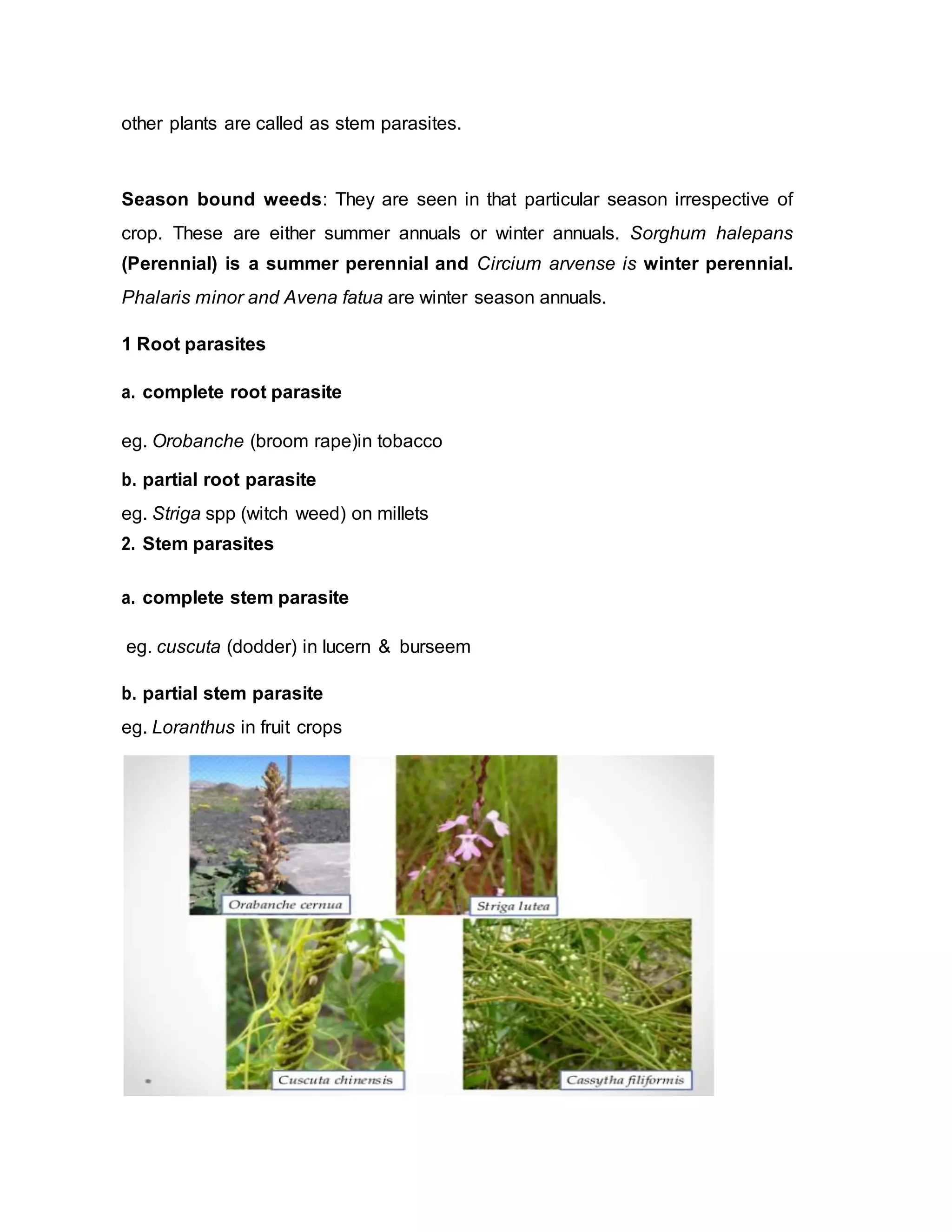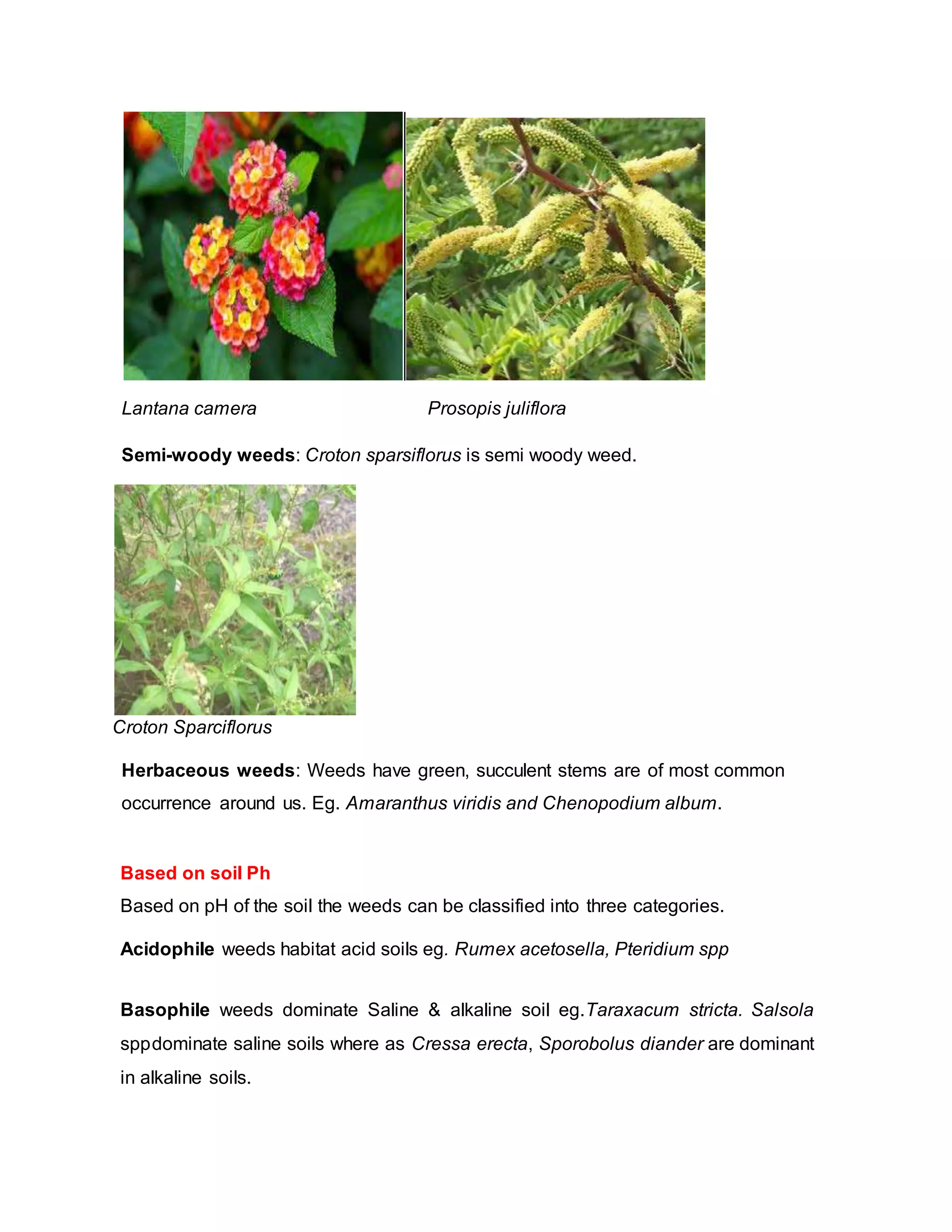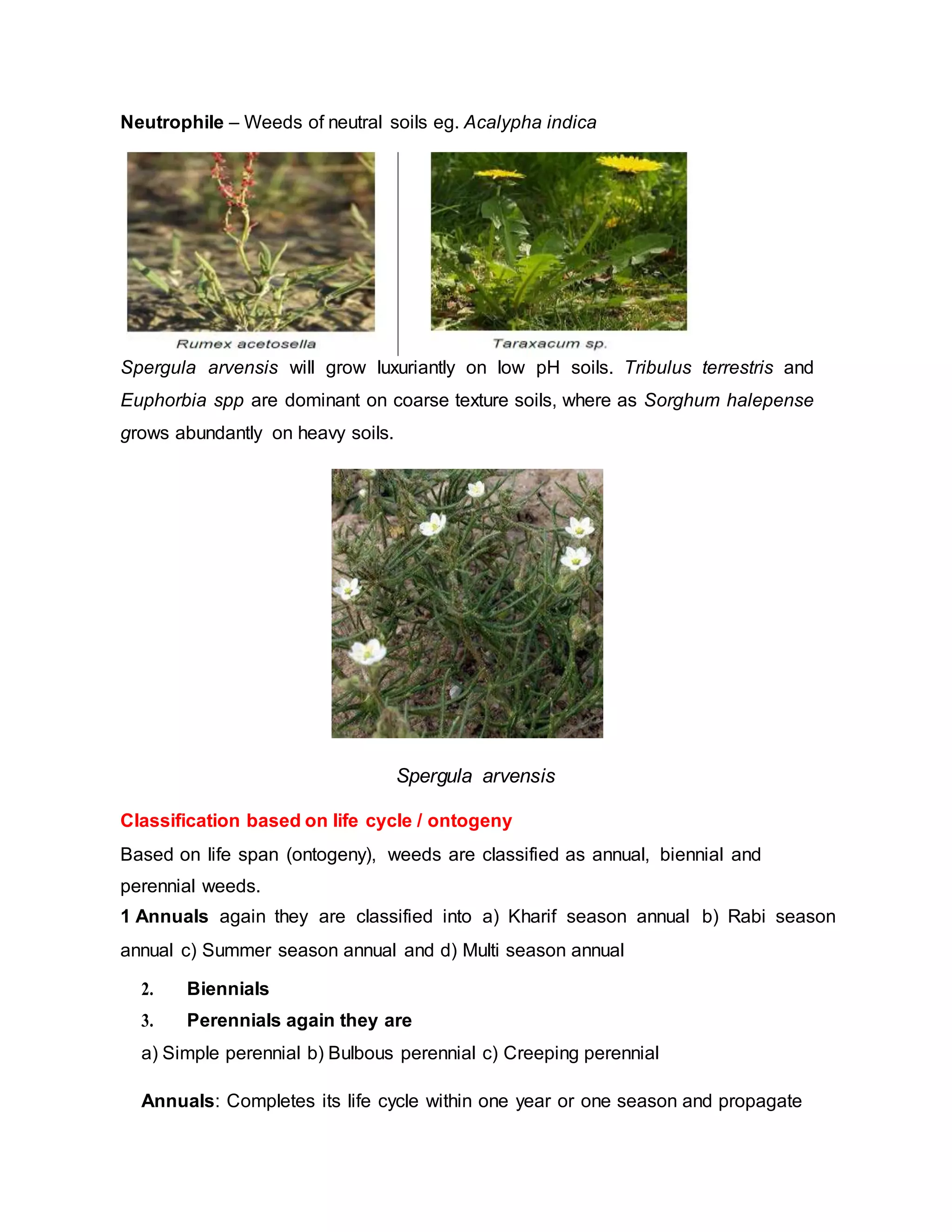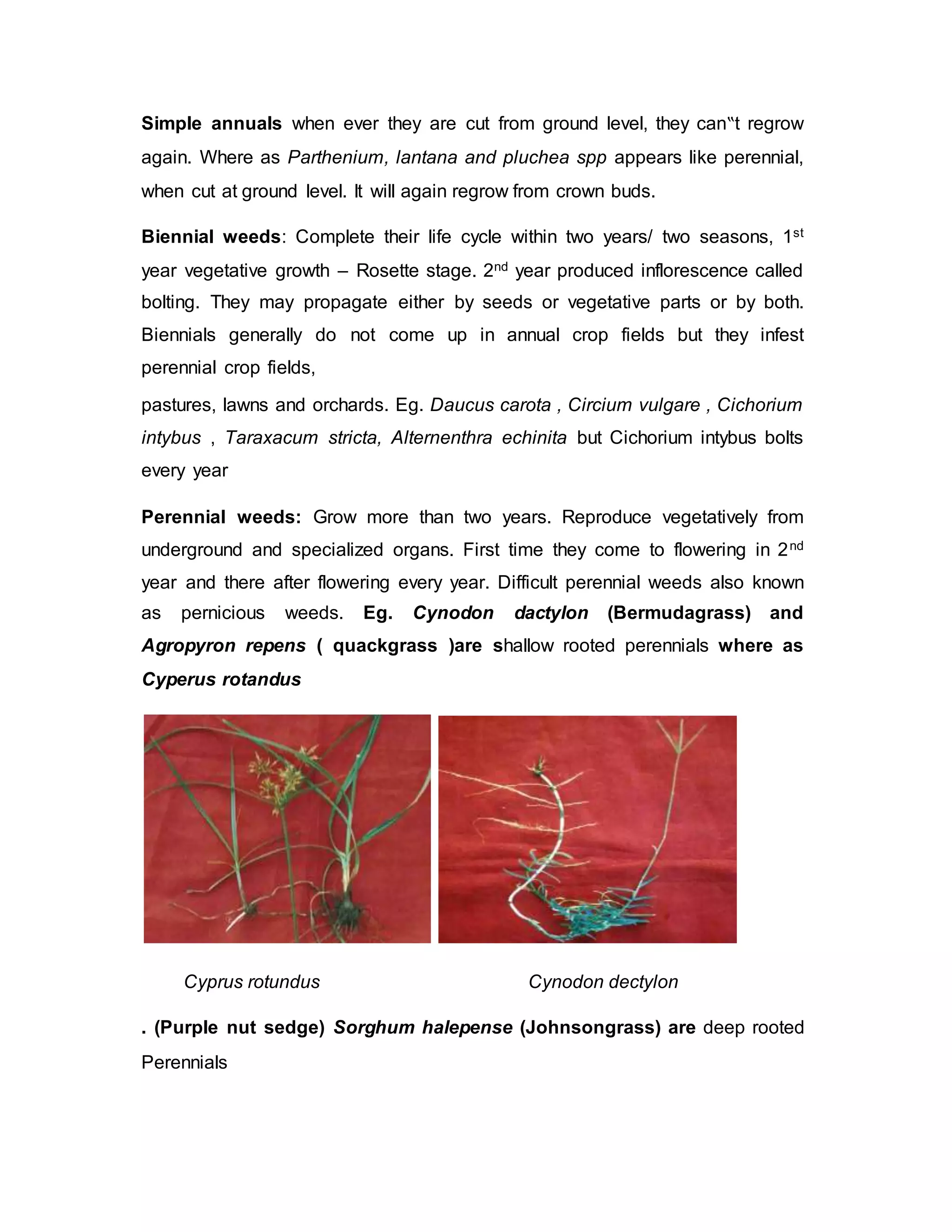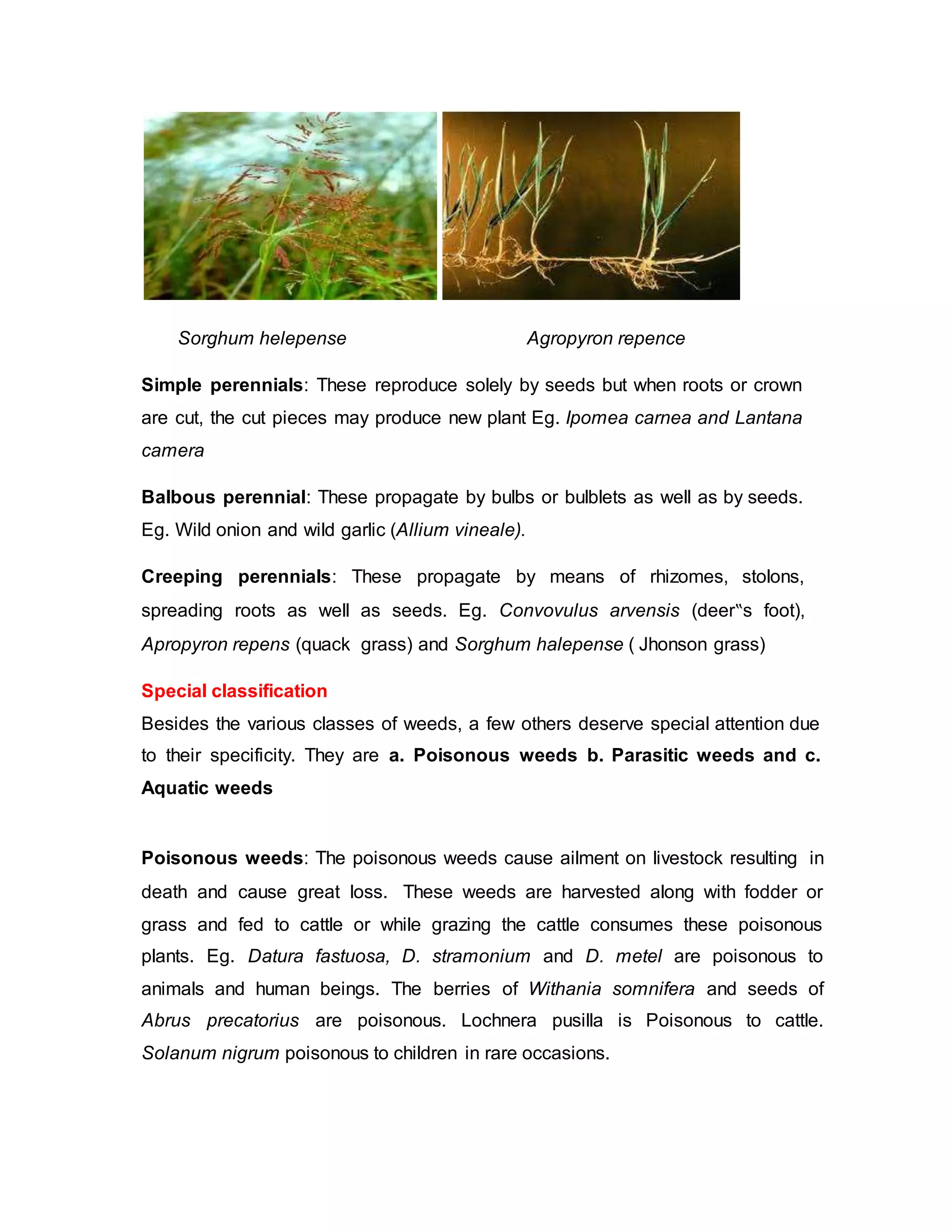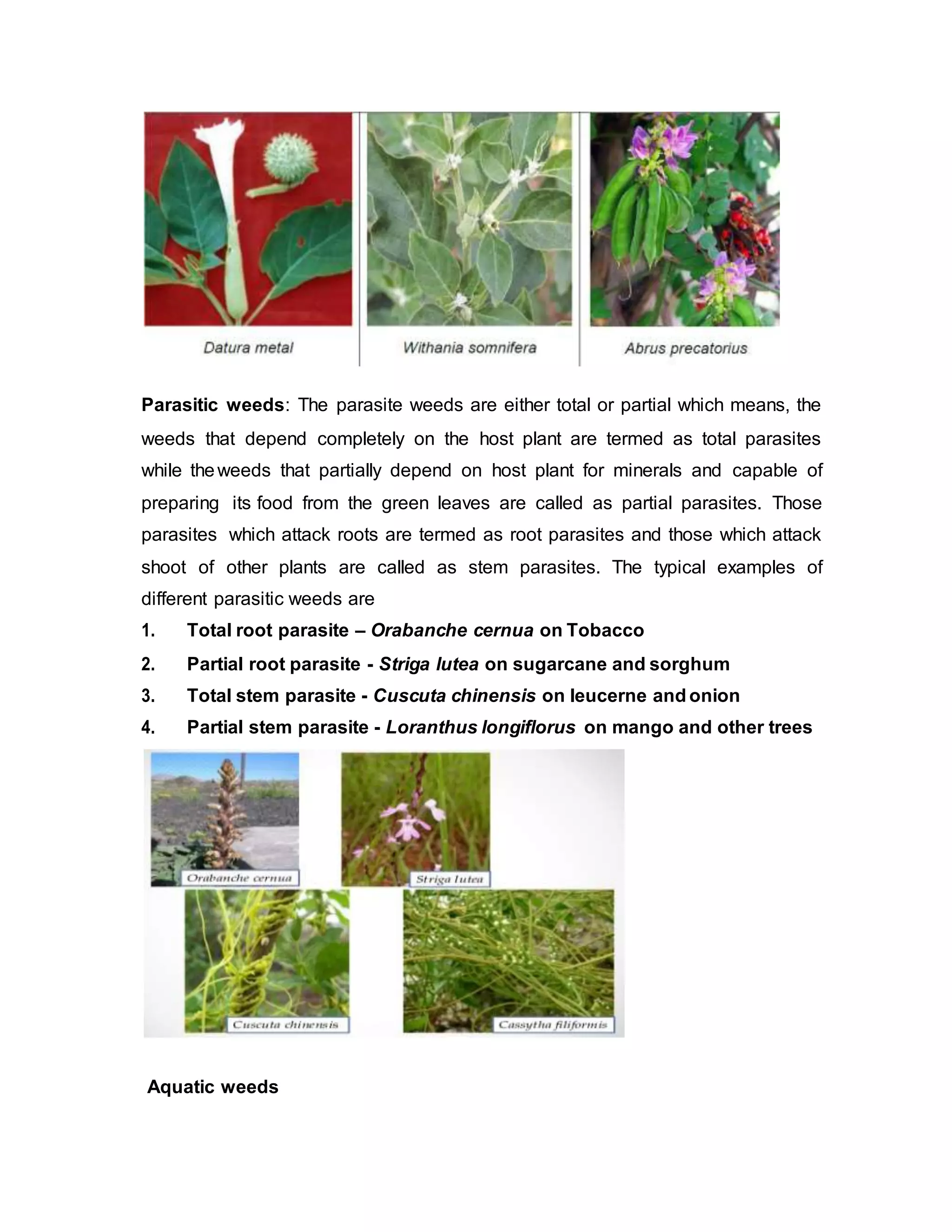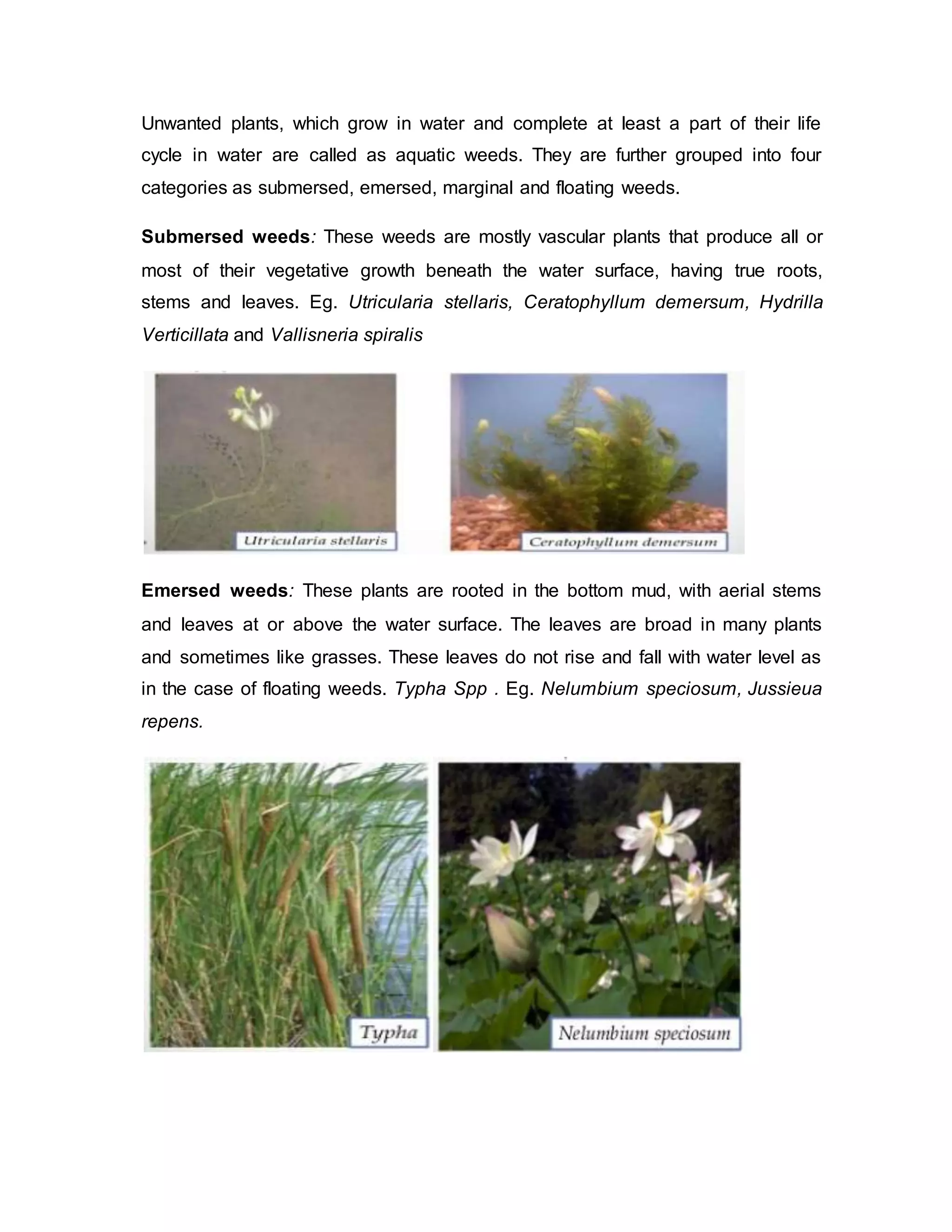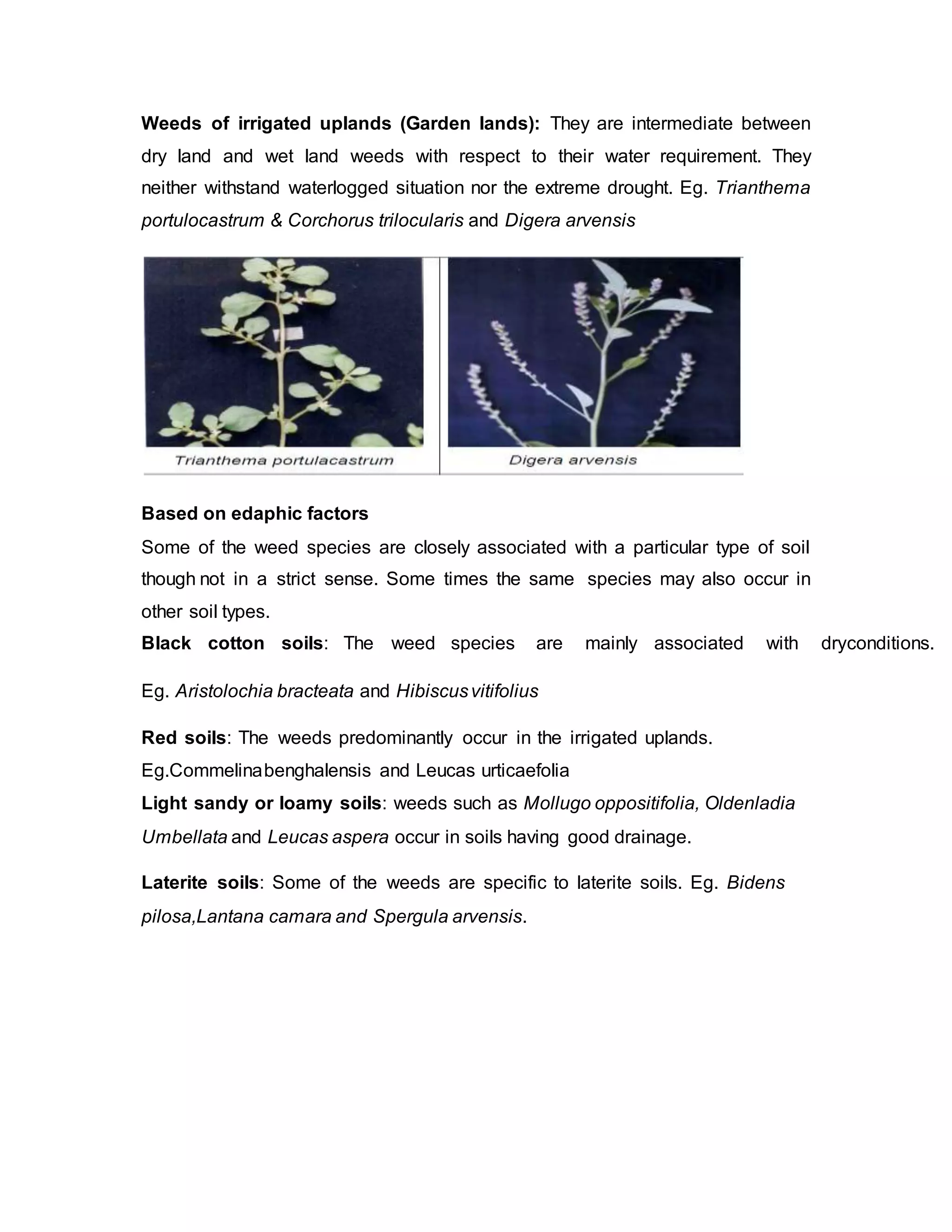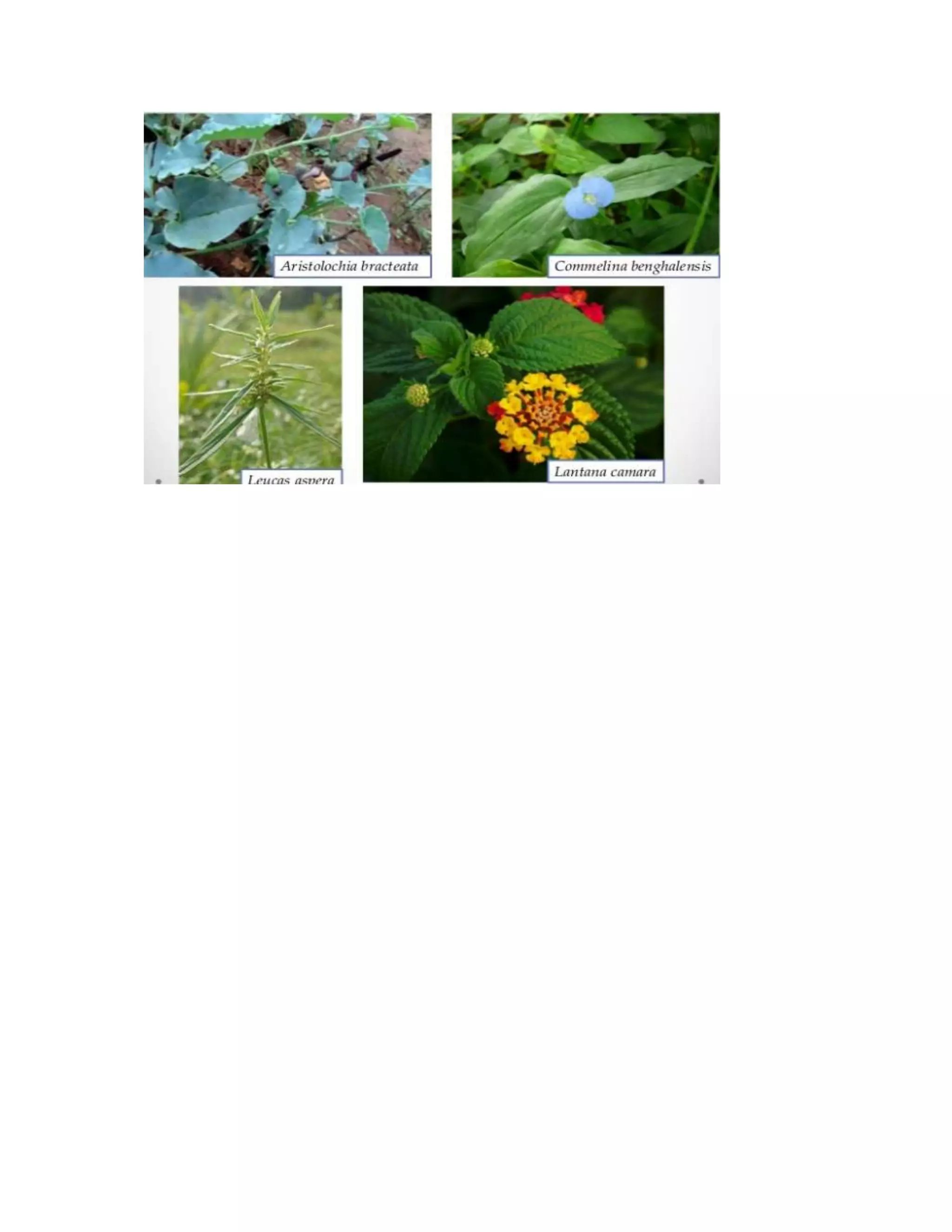The document provides a detailed classification of weeds based on 8 categories: morphology, life cycle, habitat, origin, association, nature of stem, soil type, and special classification. Some key points:
- Weeds are classified based on their morphology into grasses, sedges, and broad-leaved weeds. Important morphological characteristics include leaves, venation, root systems, and growing points.
- Classification by life cycle includes annuals, biennials, and perennials. Annuals can be kharif, rabi, summer or multi-seasonal. Perennials reproduce vegetatively or by seeds.
- Habitat classification includes terrestrial and aquatic weeds. Terrestrial we

